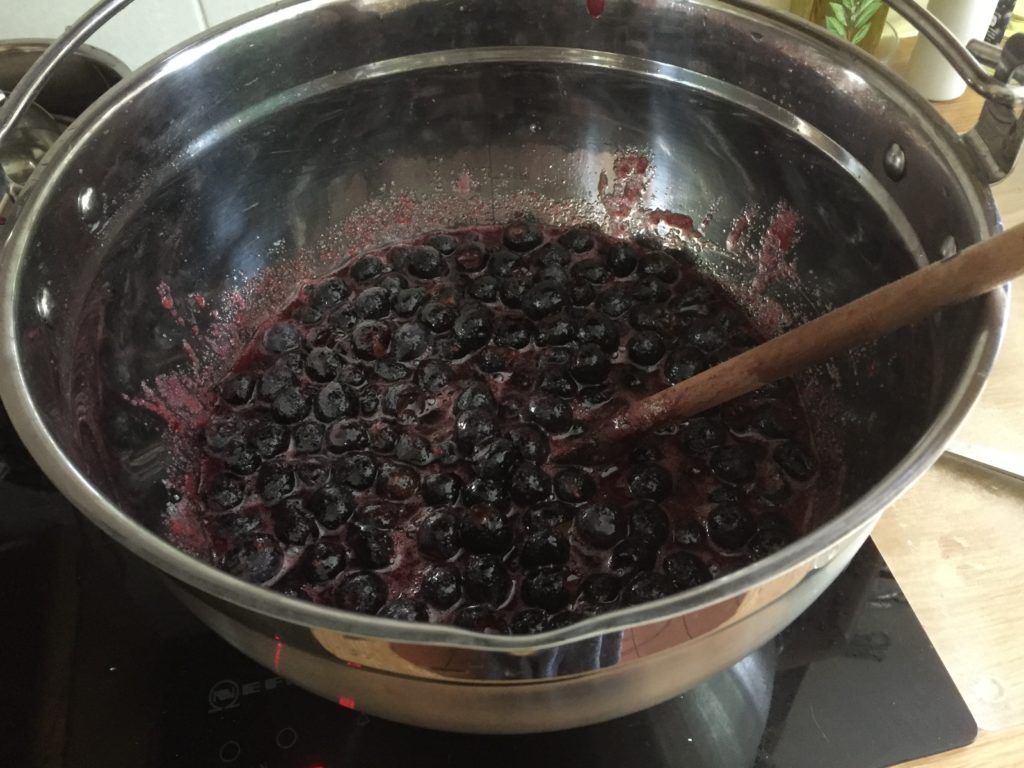Sunday, October 6th, 2019

The wild damson tree down the lane had a good crop of black fruit this year. I’ve never been sure whether the round, tart fruit, the size of large cherries, are bullaces or damsons, or a hybrid. All I know is that the tree is as old as its enclosing hedges, which contain everything from hawthorn and blackthorn to hops and cobs (the Kent cob is our local variety of hazel). The fruit of this wild plum tree makes a rich, deep crimson jam with a distinctive taste. Guests often ask me if I make my own jams. By and large, I don’t, having more than enough work in producing the daily loaves of bread and the yoghurt in addition to all the bed making, laundry and breakfast preparation, but I make an exception for the annual raspberry and damson jam-making sessions. The raspberries in the garden are too plentiful even to freeze, and the wild damson jam is something you wouldn’t often see in any shop.
Damsons take time to prepare because you have to remove the stones with a cherry pitter. It is much better to remove the stones beforehand, as this keeps the fruit whole and the boiling time to a minimum. If you are tempted to throw the fruit in whole and then to skim off the stones during the cooking, you will regret it because the fruit must be boiled vigorously for a long time before the stones are freed of their flesh. Over-cooked fruit loses its structure as it turns to pulp, the skin breaks down and the jam loses it jewel-like translucency. Not least, fishing out the stones from a boiling cauldron is a messy job that takes a lot longer than you might think. I’ve tried both methods, and there is no doubt that cooking up the stoneless fruit for as short a time as possible gives a better looking and fresher tasting jam. Once I’ve removed the stones I boil them up in a separate pan and strain off the pectin-rich juice from the stony pulp. The juice goes into the cauldron instead of water. The pulp goes in the compost bin. I try to use as little water as I can get away with during the cooking. The yield is smaller in terms of the number of pots, but the jam is fruitier and more intense.
Six of the jars from this year’s crop are large, 700 gram pots. They should see us through until next October.

